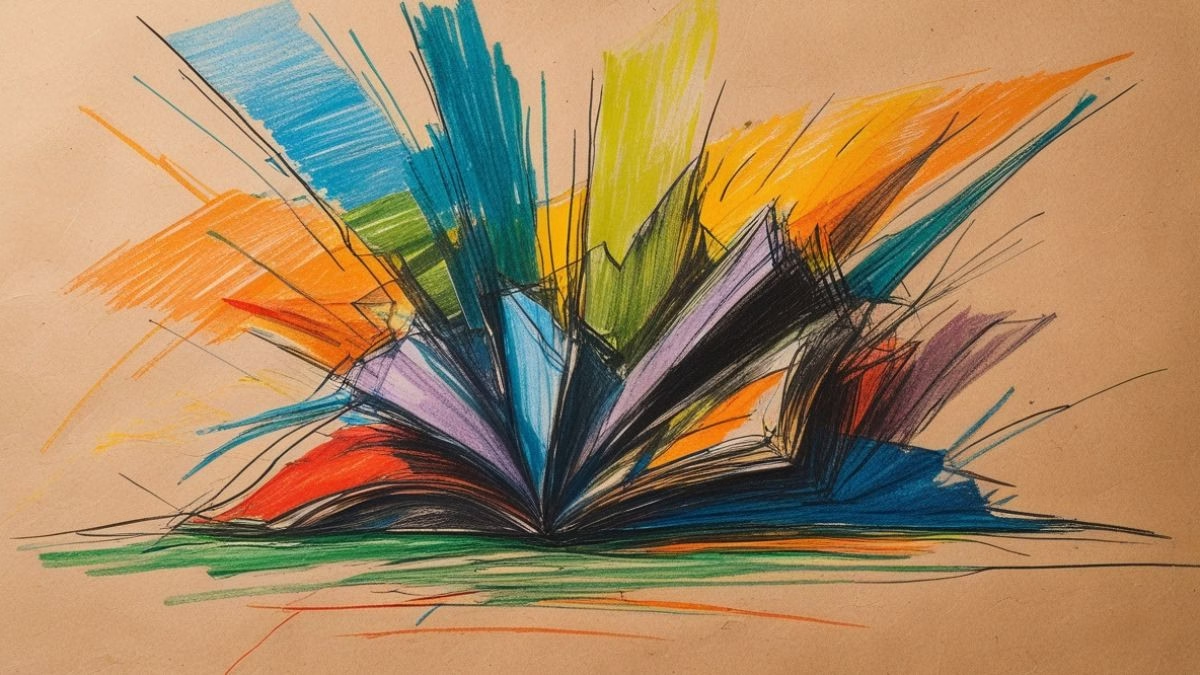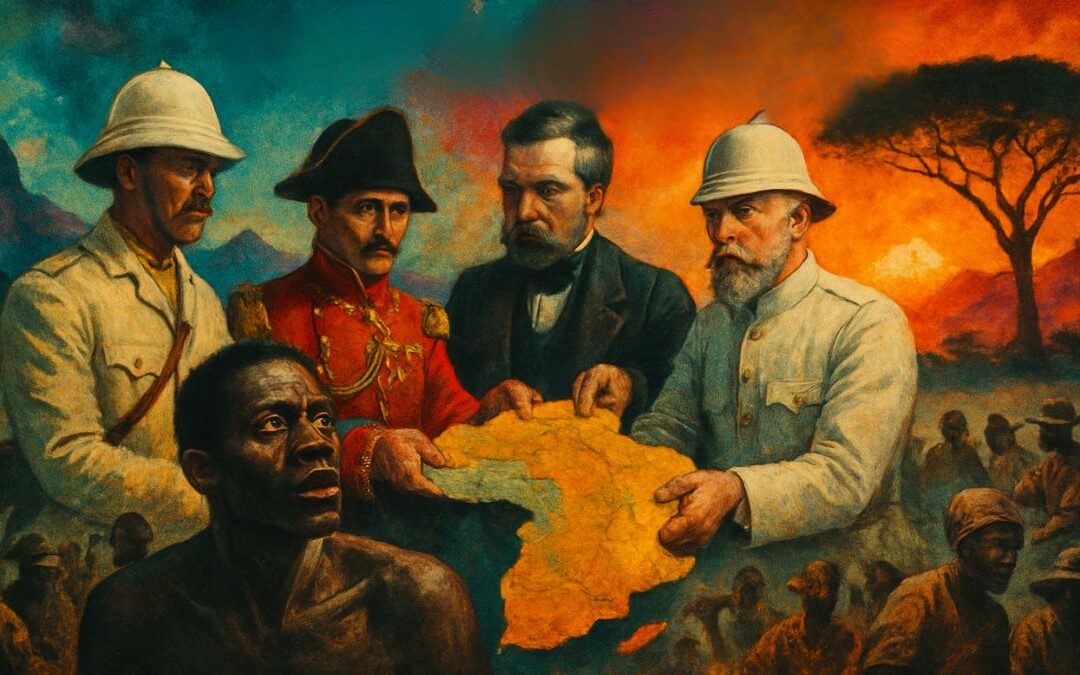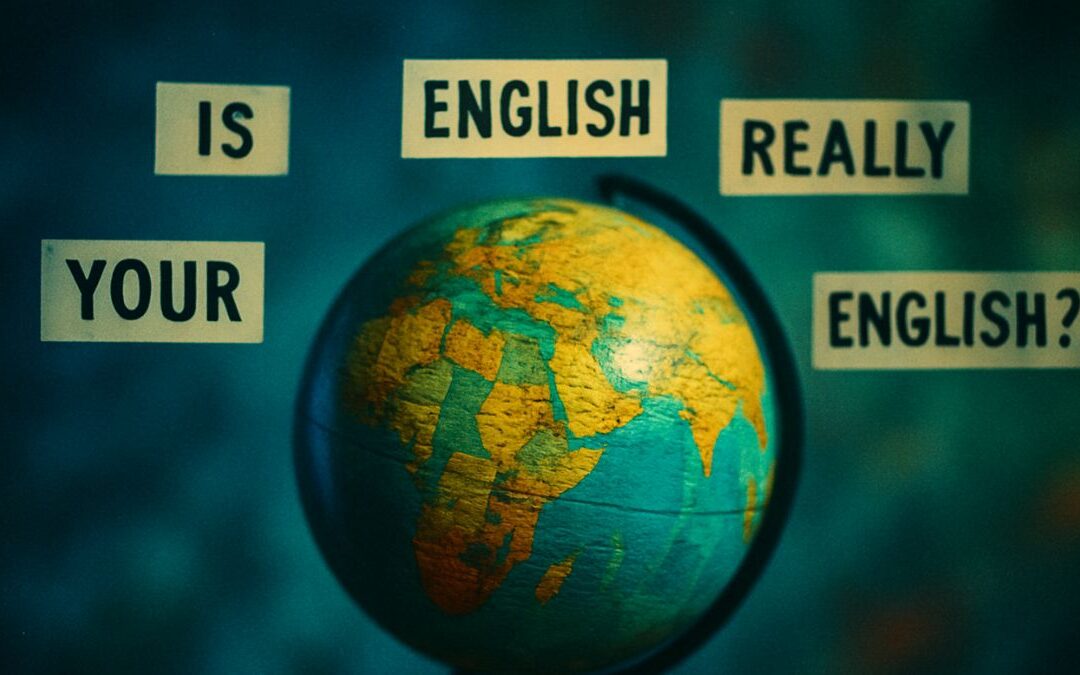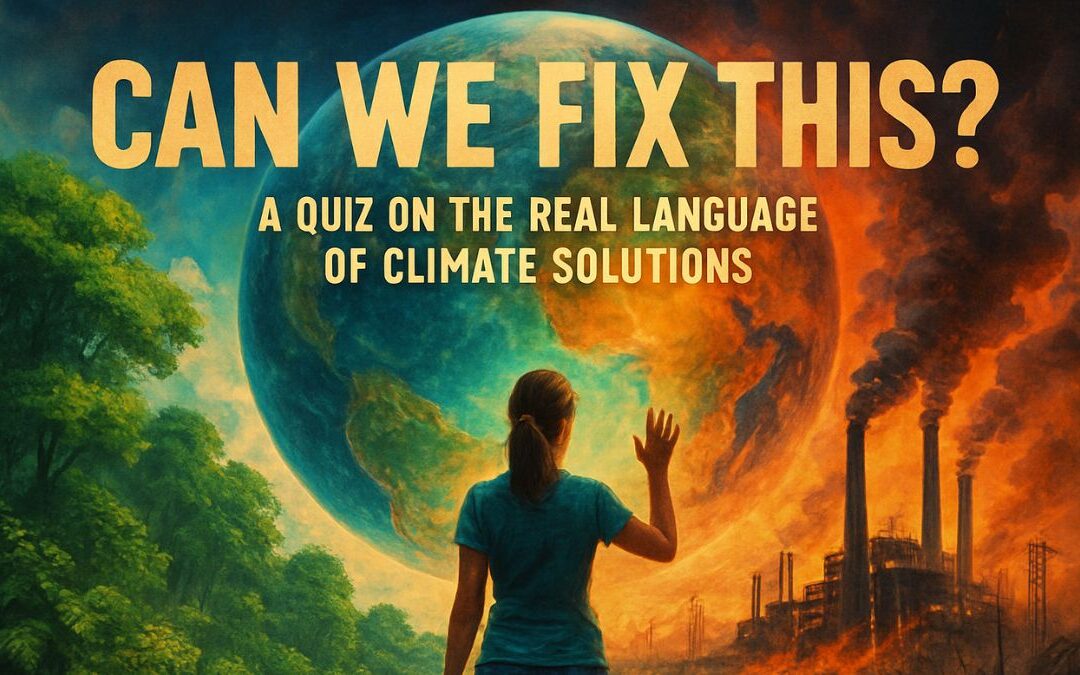- MagTalk Discussion Audio
- The Unskippable Ingredient: Why Your Story is Dead on Arrival Without Conflict
- The Anatomy of Conflict: A Tale of Two Battlegrounds
- Raising the Stakes: How to Make Your Readers Bite Their Nails
- The Conflict Arc: The Rhythmic Journey of a Story
- Practical Tips for Weaving Conflict into Your Scenes
- Focus on Language
- Let’s Learn: Vocabulary Quiz
- Let’s Discuss
- What’s a story (in a book, film, or TV show) where the internal conflict was more compelling to you than the external conflict?
- Can a story be truly great without a clear antagonist or “villain”?
- Think about your own life. When has a small, seemingly minor conflict ended up having surprisingly high stakes?
- How do different genres use conflict differently?
- Is a “happily ever after” resolution always the most satisfying? Why or why not?
- Learn with AI
- Let’s Play & Learn
MagTalk Discussion Audio
The MagTalk Discussion deep dive audio episode is not a mere reading of the article, but a lively discussion of it, so even if you decide to read the article, you may want to listen to this episode as well.
The Unskippable Ingredient: Why Your Story is Dead on Arrival Without Conflict
Let’s get one thing straight from the get-go: a story without conflict is not a story. It’s an anecdote. It’s a description. It might be a lovely, meandering piece of prose about a perfectly happy person having a perfectly wonderful day where nothing goes wrong, but it’s not a story that will grab a reader by the collar and refuse to let go. Conflict is the engine of narrative. It’s the friction that creates heat, the pressure that turns a lump of coal into a diamond. Without it, your characters are just puppets in a diorama, pretty to look at but utterly lifeless.
Imagine your favorite stories. Think of the nail-biting tension, the heart-wrenching decisions, the moments that made you gasp or cheer. Every single one of them was born from conflict. It’s the desperate struggle for survival, the agonizing choice between love and duty, the quiet battle against one’s own inner demons. It’s the fundamental force that tests your characters, reveals their true nature, and ultimately, makes their journey meaningful. To write a compelling story is to become a master architect of trouble, a connoisseur of complications. Your job isn’t to give your characters what they want; it’s to put a giant, roaring obstacle in their way and then, with bated breath, see what they do about it.
The Beating Heart of Your Narrative
Think of conflict as the story’s heartbeat. A steady, predictable pulse—thump-thump, thump-thump—is fine, but it’s the moments when the rhythm goes haywire that we truly feel alive. The sudden, terrifying lub-dub-LUB-DUB-LUBDUBDUB of a rising threat, the agonizingly slow, faint beat of near-defeat, the triumphant, racing pulse of a hard-won victory. These are the moments that define a narrative. This rhythmic variation is created by the ebb and flow of conflict. A scene without conflict is a flatline. A story without a central conflict is a corpse. The tension, the stakes, the character development—they all spring from this essential, life-giving pulse. It’s what transforms a sequence of events into a resonant, emotional experience.
It’s Not Just About Fisticuffs and Explosions
When we hear the word “conflict,” our minds often leap to the spectacular: epic sword fights, screeching car chases, buildings erupting in fireballs. And while those can certainly be a part of it, limiting your understanding of conflict to mere physical confrontation is like thinking the only flavor of ice cream is vanilla. It’s a start, but you’re missing out on a universe of richness.
Conflict is, at its core, a struggle between two opposing forces. It is the gap between what a character wants and what is preventing them from getting it. This opposition can be as subtle as a crippling sense of self-doubt or as overt as a dragon guarding a treasure. It can be a whispered threat in a silent room, a moral quandary that offers no easy answers, or the slow, inexorable creep of a terminal illness. The most powerful stories often weave these different threads of conflict together, creating a complex tapestry of struggle that feels deeply, authentically human. True conflict isn’t just about the clash of swords; it’s about the clash of wills, desires, and values.
The Anatomy of Conflict: A Tale of Two Battlegrounds
Every compelling conflict plays out on at least one of two battlegrounds: the world outside the character, and the world within. The magic happens when you make these two arenas collide. Understanding the distinction—and the interplay—between internal and external conflict is fundamental to crafting a narrative with both plot and purpose.
The War Within: Character vs. Self
This is the stuff of great literature, the crucible in which character is forged. Internal conflict is the private, often silent, war a character wages against their own flaws, fears, desires, or beliefs. It’s the recovering alcoholic staring at a bottle of whiskey, the knight wrestling with his fear before a battle, the scientist grappling with the moral implications of her discovery.
This type of conflict is powerful because it’s universally relatable. We all have our inner demons. We’ve all been torn between what we should do and what we want to do. When a character battles themselves, they are battling on our behalf. These struggles are what give a character depth and make them more than just a collection of traits. A hero who is fearless is boring. A hero who is terrified but acts anyway? That’s someone we can root for. Their internal struggle makes their external actions matter so much more. This is where you explore themes of guilt, identity, redemption, and ambition. It’s the character’s soul laid bare for the reader to see.
The World Outside: The Many Faces of Opposition
External conflict is any struggle that pits your character against a force outside of themselves. It’s the tangible obstacle course they must navigate. Traditionally, these are broken down into a few key categories:
- Character vs. Character: This is the most classic form of conflict. Protagonist vs. Antagonist. Hero vs. Villain. It’s Batman versus the Joker, Sherlock Holmes versus Moriarty. But it can also be more nuanced: two friends competing for the same promotion, a daughter defying her mother’s wishes, two lovers with irreconcilable dreams. This conflict is driven by opposing goals and desires.
- Character vs. Nature: Here, the adversary is the natural world itself. Think of a sailor battling a hurricane, a hiker lost in a blizzard, or a lone survivor navigating a post-apocalyptic wasteland. This type of conflict emphasizes themes of human fragility, perseverance, and our often-precarious place in the universe. It strips characters down to their essential selves, testing their raw will to survive.
- Character vs. Society: In this conflict, the protagonist is an outsider, at odds with the rules, norms, or corrupt powers of the community or world they inhabit. It’s the revolutionary fighting a totalitarian regime, the whistleblower exposing corporate malfeasance, or the teenager rebelling against the suffocating conformity of their small town. This conflict allows you to explore grand themes of justice, freedom, and individuality.
- Character vs. Supernatural/Fate/Technology: This is a broader category for forces that are beyond human. It could be a struggle against a ghost, a prophecy that cannot be escaped (like in Greek tragedy), or an artificial intelligence that has turned against its creators. These conflicts push the boundaries of reality and allow for an exploration of faith, free will, and what it means to be human in the face of the unknown.
The most sophisticated stories don’t just pick one. They layer them. A detective (Character vs. Character) might be battling his own alcoholism (Character vs. Self) while trying to expose corruption that runs all the way to the top (Character vs. Society). This is how you create a story that feels as messy, complicated, and engrossing as real life.
Raising the Stakes: How to Make Your Readers Bite Their Nails
Conflict is meaningless without stakes. If the character has nothing to lose, why should the reader care if they win or lose? The stakes are the answer to the question: “So what?” Why does this struggle matter? Raising the stakes is the art of making the consequences of failure so dire, so emotionally resonant, that the reader is perched on the edge of their seat, desperate to know what happens next.
What Does Your Character Stand to Lose?
The best stakes are never just about physical survival, though that can be a powerful motivator. They are deeply personal and tied to the character’s core desires and fears. To identify your stakes, ask yourself what is most important to your protagonist. Is it…
- Their Life or Physical Well-being? This is the most primal stake.
- Their Freedom? The threat of imprisonment or enslavement.
- Their Reputation or Honor? The risk of being shamed, disgraced, or ostracized.
- Their Love or Relationships? The potential loss of a spouse, a child, a best friend. This often carries more weight than the threat of their own death.
- Their Dream or Goal? The possibility that a lifetime of work and sacrifice will amount to nothing.
- Their Sanity or Identity? The fear of losing their mind or becoming someone they despise.
To truly raise the stakes, you must make the reader understand why these things matter to the character. Don’t just tell us the hero loves his family; show us. Show them laughing together, show the small moments of tenderness. Then, put that family in jeopardy. Now, the conflict isn’t just about defusing a bomb; it’s about saving the entire world that a character has built for themselves. The potential loss becomes palpable.
The Ticking Clock and Other Pressure Cookers
Introducing a time limit is one of the most effective ways to instantly inject tension and raise the stakes. The “ticking clock” is a classic for a reason. The hero has 24 hours to find the antidote, the bomb will go off at midnight, the spaceship will run out of oxygen by dawn. This forces the character to act, often recklessly, and it gives the reader a clear and escalating sense of dread.
But pressure cookers aren’t just about time. You can increase pressure by:
- Limiting Options: As the story progresses, doors should close. The easy ways out become blocked. The character is forced down a narrower and more dangerous path.
- Increasing the Power of the Antagonist: Just when the hero thinks they have the upper hand, the villain reveals a new, more terrifying ability or resource.
- Applying Public Pressure: The character’s struggle is made public. They are now being watched, judged, and perhaps hunted. The media, the government, the entire town—they all become part of the conflict.
- Creating a Moral Dilemma: Force the character into a no-win situation. To save one person, they must sacrifice another. To achieve their goal, they must compromise their own moral code. This puts their very soul at stake.
The Conflict Arc: The Rhythmic Journey of a Story
Conflict isn’t a static state; it’s a dynamic process. It has a beginning, a middle, and an end. This progression, or arc, is what gives a story its shape and momentum. Understanding this structure helps you control the pacing and emotional impact of your narrative, guiding your reader on a carefully orchestrated journey of rising tension and ultimate release.
Inciting Incident: The Match That Lights the Fuse
Your character starts in a state of equilibrium—their “normal life.” It might not be perfect, but it’s familiar. The inciting incident is the event that shatters that equilibrium and throws their world off-balance. It’s the single moment that kicks off the central conflict of the story. It’s the tornado whisking Dorothy to Oz, the holographic message from Princess Leia that Luke Skywalker stumbles upon, the moment Katniss Everdeen volunteers as tribute. This is the call to adventure, the point of no return. It presents the character with a problem they can no longer ignore and sets the entire plot in motion.
Rising Action: Turning Up the Heat
This is the bulk of your story, and its purpose is to escalate the conflict systematically. The rising action isn’t just a series of random events; it’s a chain of cause and effect where each scene builds upon the last, making the character’s situation progressively more difficult. Here, the character tries to solve their problem, but their attempts often lead to new and greater complications. Obstacles become harder to overcome. The stakes get higher. The antagonist’s power grows. This is where you introduce subplots, reveal crucial information, and push your character to their limits, forcing them to learn and adapt. Each step of the rising action should feel like turning the handle on a jack-in-the-box, winding the tension tighter and tighter until it’s ready to burst.
Climax: The Point of No Return
This is the explosive moment the rising action has been building towards. The climax is the peak of the conflict, the final, decisive confrontation between the protagonist and the primary antagonistic force. It’s the moment of maximum tension where the central question of the story will be answered: Will the hero win or lose? This is not necessarily the biggest explosion or the most frantic fight scene. It is the moment where the protagonist must face their greatest fear and use everything they have learned to overcome it. The outcome of the climax must be a direct result of the character’s choices and actions. It is the story’s cathartic release, the moment the jack-in-the-box finally springs open.
Falling Action and Resolution: The Aftermath
After the explosive energy of the climax, the story needs to wind down. The falling action deals with the immediate consequences of the climax. The smoke clears, and we see the results of the final battle. Loose ends are tied up, surviving characters react to what has happened, and the tension subsides. This leads to the resolution, which brings the story to a close. The resolution is the “new normal.” It shows how the character and their world have been changed by the conflict. It doesn’t have to be a “happily ever after,” but it must feel earned. It should answer the central question posed by the inciting incident and provide the reader with a sense of closure, confirming that the journey they took with the character was meaningful.
Practical Tips for Weaving Conflict into Your Scenes
Knowing the theory is one thing; putting it into practice is another. Conflict shouldn’t be a big-picture concept you only think about when plotting. It needs to be alive on every page, in every scene, in every line of dialogue. Here’s how to make your story crackle with tension from beginning to end.
Every Scene Needs a Goal and an Obstacle
The secret to a compelling scene is to treat it like a mini-story with its own conflict. For every scene you write, ask yourself two questions:
- What does my character want in this scene? (The goal) This shouldn’t be abstract; it needs to be concrete and immediate. They don’t just want “justice”; they want to get a specific confession from a suspect in this room, right now.
- What is preventing them from getting it? (The obstacle) This is the scene-level conflict. The suspect is lying. The character’s partner disagrees with their interrogation method. A lawyer bursts in and stops the questioning.
This simple formula—goal vs. obstacle—ensures that every scene has inherent tension and purpose. The character’s success or failure in achieving their scene goal will then propel them into the next scene, creating that crucial narrative momentum.
Use Dialogue as a Battlefield
Dialogue is one of your most potent tools for generating conflict. Great dialogue is rarely simple, direct communication. It’s a chess match. Characters hide their true intentions, they talk past each other, they use subtext, they try to manipulate, persuade, or wound one another with words.
Turn your conversations into battlegrounds. Give each character in the conversation a different agenda. What does each person want from this exchange? Maybe one wants forgiveness, while the other wants revenge. Maybe one wants information, and the other wants to protect a secret. When these competing desires clash, your dialogue will spark and sizzle. Avoid “on-the-nose” dialogue where characters say exactly what they’re thinking. Instead, let the conflict simmer beneath the surface of the words they choose—and the words they deliberately leave unsaid.
Show, Don’t Just Tell the Struggle
This is the oldest advice in the book for a reason. Don’t tell your reader the character is conflicted; show it to them. How does their internal struggle manifest externally? A character torn by guilt might be unable to sleep, might start drinking too much, or might obsessively wash their hands. A character suppressing anger might have a clenched jaw, a tapping foot, or a habit of gripping things too tightly. These physical details make the internal conflict tangible and believable.
Similarly, don’t just state that the stakes are high. Make the reader feel it. Instead of saying, “The kingdom was in peril,” describe the worried faces of the villagers, the shuttered shops, the children who no longer play in the streets. Ground your conflict in sensory details and specific, observable actions. This is how you move from simply telling a story to creating an immersive world where the reader feels the tension, shares the fear, and celebrates the victory as if it were their own.
Focus on Language
[ppp_patron_only level=5]
Vocabulary and Speaking
Alright, let’s talk about some of the words and phrases we used in that article. The goal here isn’t just to sound smart, but to use language precisely, to paint a clearer, more vivid picture. Think of these words as specialized tools. You can build a shed with just a hammer and a saw, but having the right drill bits and wrenches makes the job cleaner, stronger, and a whole lot easier. So, let’s open up the toolbox.
One of the first phrases I used was get-go. I said, “Let’s get one thing straight from the get-go.” This is a wonderfully informal and very American way of saying “from the very beginning” or “from the start.” You can hear the rhythm in it, can’t you? “Get-go.” It’s punchy. You might say to a friend who’s starting a new project, “You need to establish clear rules from the get-go to avoid confusion later.” Or if you’re explaining a misunderstanding, you could say, “Look, the problem was there from the get-go because we never agreed on the budget.” It implies immediacy and a starting point. It’s a fantastic little phrase to have in your conversational pocket.
Next up, a word I really like: connoisseur. I wrote, “To write a compelling story is to become a master architect of trouble, a connoisseur of complications.” A connoisseur is an expert judge in matters of taste. We usually hear it in relation to wine, art, or food. A wine connoisseur can tell you the region, the grape, and the year just by sniffing and sipping. But we can use it more broadly and a bit poetically, as I did here. By calling a writer a “connoisseur of complications,” I’m saying they have a deep, expert appreciation for the fine details of creating problems for their characters. You could use it in your own life, maybe a bit humorously. If your friend is an expert at picking the best coffee shops, you could call them a “connoisseur of cafes.” If someone has a talent for finding drama, you might say, “She’s a real connoisseur of gossip.” It elevates the idea of being an expert from just knowing things to having a refined and discerning taste.
Let’s talk about fisticuffs. It’s a fun, slightly old-fashioned word. I used it to make a point: “It’s Not Just About Fisticuffs and Explosions.” Fisticuffs simply means fighting with the fists, a brawl or a punch-up. It sounds a little more formal or even comical than just saying “a fight.” You wouldn’t use it to describe a serious, tragic act of violence. It has a certain theatrical flair. You might read it in a historical novel or use it to describe a scuffle in a slightly detached, humorous way. For example, “I left the bar just as a disagreement over the football score was about to descend into fisticuffs.” It’s a word that adds a bit of character and flavor to your description of a physical fight.
Then there’s the word inexorable. I described “the slow, inexorable creep of a terminal illness.” This is a powerful and somewhat formal word. It means impossible to stop or prevent. It describes a force or a process that moves forward relentlessly. Think of the inexorable march of time, or the inexorable rise of the tide. When you use this word, you’re emphasizing the powerlessness one feels in the face of something. It’s not just that something is happening; it’s that nothing can be done to stop it. You could say, “Despite all their efforts to save the company, its slide into bankruptcy seemed inexorable.” It carries a sense of weight and fatalism.
Now for a fantastic metaphor: crucible. I said internal conflict is “the crucible in which character is forged.” A literal crucible is a ceramic or metal container in which metals or other substances can be melted or subjected to very high temperatures. So, metaphorically, a crucible is a severe test or a challenging situation that forces a person or a thing to change and develop. It’s a trial by fire. When you go through a crucible, you come out transformed, either stronger or broken. You could describe a surgeon’s intense training as a crucible, or say that “the early years of their marriage were a crucible that ultimately strengthened their bond.” It’s a much more evocative way of saying “a difficult experience.” It implies heat, pressure, and transformation.
Another great word is palpable. I wrote, “The potential loss becomes palpable.” Palpable means a feeling or atmosphere so intense that it seems almost tangible, like you could reach out and touch it. The tension in the room was palpable. The sense of relief was palpable. It’s a sensory word. You’re not just saying the tension existed; you’re saying it was so thick you could feel it on your skin. It’s a step up from just saying something was “obvious” or “strong.” When you walk into a room right after an argument has occurred, that thick, heavy silence? That’s palpable tension. Use it to describe intense emotions or atmospheres.
Let’s move on to malfeasance. In the section on Character vs. Society, I mentioned a “whistleblower exposing corporate malfeasance.” This is a key term in legal and business contexts, but it’s useful to know. Malfeasance is wrongdoing or misconduct, especially by a public official or a corporation. It’s not just a mistake; it’s an intentional act of wrongdoing. Think of embezzlement, fraud, or covering up a dangerous product defect. It’s a formal and serious word for corruption or illegal deeds. You would see it in news reports, like “The investigation uncovered years of financial malfeasance at the highest levels of the company.”
Then there’s precarious. I talked about our “often-precarious place in the universe.” Precarious means not securely held or in position; dangerously likely to fall or collapse. An object can be in a precarious position, like a stack of books teetering on the edge of a desk. But we often use it to describe situations. A precarious peace treaty is one that could be broken at any moment. A precarious livelihood is one where you could lose your income very easily. It suggests instability and danger. You might say, “After the factory closed, the town’s economy was in a precarious state.” It captures that feeling of being on unsteady ground.
A very useful term from the article is on-the-nose. I advised against writing “on-the-nose dialogue.” This is a fantastic piece of writer’s jargon that has bled into general use. On-the-nose means something is too direct, too obvious, lacking any subtlety or subtext. If a character who is sad says, “I feel very sad,” that’s on-the-nose dialogue. It’s blunt and artless. In real life, people often hint at their feelings instead of stating them outright. This concept applies beyond writing. If a movie’s message is so obvious it feels like a lecture, you could say its themes were a bit on-the-nose. If a friend gives you a gift that is exactly what you were just talking about wanting, you might laugh and say, “Well, that’s a little on-the-nose, isn’t it?” It means something fits a situation almost too perfectly or obviously.
Finally, let’s look at the word cathartic. I referred to the climax as the story’s “cathartic release.” Catharsis is the process of releasing, and thereby providing relief from, strong or repressed emotions. The word comes from Greek tragedy, where the audience was supposed to experience a catharsis of pity and fear by watching the characters’ suffering. A good cry can be cathartic. Yelling into a pillow can be cathartic. In a story, the climax provides that release for the reader. All the tension that’s been building and building is finally let go. You could say, “After a stressful week, a long run in the park was incredibly cathartic.” It describes an experience that purges you of pent-up emotion and leaves you feeling cleansed.
So there you have it. Ten words and phrases that add precision, color, and depth to your language. Try to spot them in what you read and hear, and don’t be afraid to try them out yourself.
Now, let’s shift gears into a small speaking lesson. Today’s focus is on telling a compelling story about a personal conflict. We all have these stories—a tough decision we had to make, an argument with a friend, a time we struggled against the odds. The trick is to tell it in a way that makes your listener lean in.
First, use what we just learned. Instead of saying, “It was a hard time,” maybe you could describe it as a crucible. Instead of saying, “The tension was obvious,” you could say the tension was palpable.
Second, structure your story like a mini-narrative. Start with the “normal”—the situation before the problem. This is your inciting incident. For example: “Everything was going great with my roommate, we were getting along fine…” Then, introduce the conflict: “…until the issue of chores came up.”
Third, and this is key, don’t just state the conflict. Show it. Don’t just say, “We argued about cleaning.” Describe a specific scene. “I remember coming home one Friday, exhausted from work, and the sink was overflowing with his dishes from the entire week. I could feel my anger just simmering.” That’s showing, not telling.
Fourth, raise the stakes. Why did this argument matter? It wasn’t just about dishes. “It wasn’t just about the mess. It felt like a lack of respect. And our friendship felt suddenly precarious.” See how connecting the conflict to a larger stake (respect, friendship) makes it more powerful?
Finally, give your story a resolution. It doesn’t have to be a happy one. The resolution is simply what happened in the end and what you learned. “Eventually, we had a huge, blow-out fight. It was awful, but in a way, it was cathartic. We finally said everything we’d been bottling up. We’re not roommates anymore, but we managed to save the friendship, and I learned that you have to deal with problems from the get-go, not let them fester.”
So here’s your challenge: Think of a small, personal conflict you’ve experienced. It could be anything—an argument, a difficult choice, a personal struggle. Your assignment is to tell that story, either by writing it down or, even better, by recording yourself speaking it for two minutes. Try to use at least two of the vocabulary words we discussed today. Focus on setting a scene, showing the conflict instead of just telling it, and explaining why it mattered. This isn’t about being a professional storyteller; it’s about practicing how to make your experiences and your language more engaging. Give it a try.
Grammar and Writing
Welcome to the writing gym! Today, we’re going to move beyond just understanding conflict and actually put it on the page. We’re going to tackle a writing challenge designed to stretch your creative muscles and then break down the grammar and techniques you’ll need to pull it off with style.
The Writing Challenge: The Pressure Cooker Scene
Here’s your prompt:
Write a short scene (around 400-500 words) featuring a character who is facing a significant external conflict and a debilitating internal conflict at the same time. The key is to show how these two conflicts are intertwined and how they affect the character’s actions, thoughts, and decisions within the scene.
For example, perhaps your character is a surgeon trying to perform a delicate operation (external conflict) while wracked with guilt over a recent mistake that cost another patient their life (internal conflict). Or maybe it’s a politician giving a crucial speech (external conflict) while fighting a panic attack brought on by a deep-seated fear of public speaking (internal conflict). The goal isn’t to resolve the conflicts in one scene, but to place the reader directly inside the character’s pressure-cooker moment, making them feel the pull of both opposing forces.
Now, that might sound daunting, but don’t worry. We’re going to equip you with the grammatical tools and writing techniques to make this scene sing.
Grammar Spotlight: The Power of Conjunctions and Complex Sentences
To show two conflicting ideas happening at once, your best friend is the complex sentence. A complex sentence has one independent clause (a complete thought) and at least one dependent clause (a thought that can’t stand on its own). The bridge between these clauses is a subordinating conjunction, and these little words are magic for showing relationships between ideas.
Let’s look at how they work in the context of our challenge. Words like although, while, even though, whereas are perfect for highlighting contrast.
- Simple sentences: The surgeon’s hands were steady. His mind replayed his fatal mistake. (This is okay, but it feels disconnected.)
- Complex sentence: Although the surgeon’s hands moved with practiced steadiness over the patient, his mind was a chaotic replay of the mistake that had cost him everything last week.
See the difference? The word “Although” immediately links the external action (steady hands) with the internal turmoil (chaotic mind), forcing them into the same thought. It tells the reader that these two things are happening simultaneously and in opposition to each other.
Let’s try another one. Words like because, since, as are brilliant for showing cause and effect, which is perfect for demonstrating how the internal conflict influences the external one.
- Simple sentences: The politician’s voice cracked. He was terrified of the crowd.
- Complex sentence: The politician’s voice cracked mid-sentence because the sea of faces below had suddenly morphed into a monstrous wave of judgment, threatening to drown him.
Here, “because” explicitly connects the external action (cracked voice) to the internal state (terror imagined as a wave). It shows the why behind the action, deepening the characterization.
Your grammatical toolkit for this challenge:
- Contrast Conjunctions (Although, Though, Even Though, While): Use these to start your sentences to immediately establish the opposing forces.
- “While her words were calm and reassuring to the lost child, a frantic, screaming voice inside her head kept shouting that she was just as lost.”
- Cause-and-Effect Conjunctions (Because, Since, As): Use these to link an internal feeling to an external action or reaction.
- “He fumbled the key into the lock, his hands shaking, since every creak of the old house sounded like the footsteps of the man he’d wronged.”
- Participial Phrases: This is a slightly more advanced technique. A participial phrase acts like an adjective, modifying a noun or pronoun, and often begins with a word ending in “-ing” or “-ed.” They are fantastic for packing in extra detail and showing simultaneous action.
- Instead of: “He ran down the alley. He was thinking about his sister.”
- Try: “Thinking only of his sister’s warning, he sprinted down the dark alley, his breath catching in his throat.”
- Or: “Haunted by the image of the fire, the firefighter hesitated for a split second before running back into the building.”
The participial phrases (“Thinking…” and “Haunted…”) give us instant access to the character’s internal state while the main clause describes their external action.
Writing Techniques for a Successful Scene
Beyond the grammar, let’s talk about the art of it.
- Filter Through the Character’s Senses: Don’t be an objective camera. Put us right inside the character’s head. How does their internal state color what they see, hear, and feel?
- Not just: “The room was crowded.”
- But: “The crowded room seemed to press in on him, the cheerful chatter melting into a dull, threatening roar in his ears. Each smiling face felt like an accusation.”
- Juxtapose Action and Thought: One of the most powerful techniques is to show a direct, real-time contrast between what the character is doing and what they are thinking.
- He smiled and shook the client’s hand, feeling the familiar grip of a good deal closing. Liar, a voice in his head hissed. You’re selling them a time bomb. The physical sensation of the handshake could be firm and confident, while the internal monologue reveals the rot beneath.
- Use Physical Manifestations: As we discussed in the main article, show the internal conflict through external “tells.” Is your character’s heart racing? Are their palms sweating? Are they grinding their teeth? Are they subconsciously rubbing an old scar? These small physical details make the internal struggle tangible and real for the reader. Let the body betray the mind’s secrets.
- Vary Your Sentence Length: A long, complex sentence full of clauses can mimic a racing, spiraling train of thought. A short, punchy sentence can deliver a moment of stark realization or a sudden, panicked action. Use this rhythm to control the pace and reflect the character’s mental state.
- “Although he knew he should be focusing on the complex equations scrolling down the monitor, the only thing he could actually see was the memory of her turning away from him at the station, a single tear tracing a path through the grime on the window, and he realized with a sudden, gut-wrenching clarity that none of this mattered. He hit the abort button.”
So, take the challenge. Pick your character, pick your two warring conflicts, and throw them into the pressure cooker. Use complex sentences with subordinating conjunctions to weave those conflicts together. Filter the world through their stressed-out senses and let their bodies betray their inner turmoil. Don’t worry about perfection. The goal is to practice, to play with these tools, and to create a moment of powerful, layered tension that will leave a reader breathless. Good luck.
Let’s Learn: Vocabulary Quiz
Let’s Discuss
What’s a story (in a book, film, or TV show) where the internal conflict was more compelling to you than the external conflict?
Think about characters who are their own worst enemy. Was it a story about addiction, guilt, or a crisis of faith? Discuss why that internal struggle felt so powerful. Did it make the character’s external actions more meaningful or tragic? For example, in Breaking Bad, is Walter White’s external battle against rival drug lords as interesting as his internal battle with his own pride and ego?
Can a story be truly great without a clear antagonist or “villain”?
Consider stories where the primary conflict is Character vs. Nature or Character vs. Self. Think of films like Cast Away or Wild. Does the lack of a human villain make the story stronger or weaker? Discuss whether an impersonal force like “society” or “nature” can be as compelling an opponent as a well-developed antagonist with their own motivations.
Think about your own life. When has a small, seemingly minor conflict ended up having surprisingly high stakes?
Share an example of a time when a simple disagreement or problem escalated. Why did the stakes get so high? Was it about a principle, a relationship, or personal pride? This is a chance to reflect on how conflict works in real life, not just in fiction, and how easily a small spark can start a large fire.
How do different genres use conflict differently?
Compare how conflict is used in a romance versus a thriller, or a comedy versus a drama. In a romance, the central conflict is usually about the obstacles keeping the lovers apart. In a thriller, it’s about life-and-death stakes. In a comedy, conflicts are often based on misunderstandings that lead to humorous situations. Discuss which genre you think uses conflict most effectively and why.
Is a “happily ever after” resolution always the most satisfying? Why or why not?
Think about stories with ambiguous, bittersweet, or even tragic endings. Can these be more memorable or thought-provoking than a neat and tidy resolution where the hero wins and all problems are solved? Discuss a time when an unhappy ending felt more “right” or powerful for the story than a happy one would have. Does a perfect resolution sometimes feel cheap or unearned?
Learn with AI
Disclaimer:
Because we believe in the importance of using AI and all other technological advances in our learning journey, we have decided to add a section called Learn with AI to add yet another perspective to our learning and see if we can learn a thing or two from AI. We mainly use Open AI, but sometimes we try other models as well. We asked AI to read what we said so far about this topic and tell us, as an expert, about other things or perspectives we might have missed and this is what we got in response.
Hello there. It’s great to have a chance to add a few more layers to this discussion on conflict. The article you’ve just been through does a fantastic job of laying out the foundational pillars: internal vs. external, the conflict arc, raising the stakes. It’s a solid blueprint. But like any blueprint, the real magic comes from the master builders who know the secret passages and hidden rooms of the craft. Let’s talk about a few of those.
We’ve talked about Character vs. Character, Nature, and Society. But what about the more metaphysical or modern forms of conflict that are becoming increasingly relevant? Let’s consider Character vs. Fate/The Supernatural. This is one of the oldest forms of conflict, think of Oedipus trying to escape a prophecy only to run right into its arms. It’s a powerful framework for exploring questions of free will. Does your character have agency, or are they merely a pawn in a game played by gods or cosmic forces? In a modern context, this isn’t just about Greek gods. It could be a character in a horror story battling a curse, or a character in a drama who feels trapped by a “destiny” of poverty or genetic predisposition. The true conflict isn’t just fighting the external force; it’s the internal battle against despair when it feels like the universe itself is against you.
Then there’s the increasingly prevalent Character vs. Technology. This is more than just “killer robots.” This conflict explores our relationship with the tools we create. It could be a character fighting for privacy against invasive social media algorithms, an elderly person struggling to connect with a family that lives entirely through screens, or a creative person, like an artist or a writer, feeling their skills are being devalued or replaced by artificial intelligence. This conflict taps into very current anxieties about what it means to be human in a world where technology is a constant, and sometimes controlling, presence. The antagonist isn’t a sentient AI trying to take over the world, but the subtle, dehumanizing pressure of the systems we’ve built around ourselves.
Another point we can expand upon is the idea of positive conflict. We tend to think of conflict as negative—a struggle, a fight, a problem. But what about conflict that arises from two good things being in opposition? This is the core of a powerful dilemma. A character is offered their dream job, but it’s on the other side of the world from their aging parent who needs them. Both options are rooted in love and duty. This isn’t good vs. evil; it’s good vs. good. This type of conflict is incredibly powerful because there is no easy answer, and the choice the character makes will genuinely define who they are. It forces the reader to ask themselves, “What would I do?” and that’s a sign of truly deep engagement.
Finally, let’s not forget the power of ironic conflict. This is when a character’s efforts to solve a problem inadvertently make it worse, or when the solution to their problem creates an even bigger one. A man terrified of being poor works so hard to get rich that he alienates his family, and ends up dying wealthy but utterly alone—a different kind of poverty. This is the stuff of tragedy and dark comedy. It highlights the absurdities of life and the often-unforeseen consequences of our actions. The conflict is driven not just by an obstacle, but by the character’s own flawed approach to that obstacle.
So, as you craft your stories, think beyond the basic categories. Think about the philosophical questions. Is your character fighting another person, or are they fighting the very concept of destiny? Is the antagonist a corporation, or is it the soul-crushing technology that corporation created? Is the choice between right and wrong, or between two different, competing rights? By exploring these more nuanced, complex, and sometimes more abstract arenas of conflict, you can elevate a simple story into a resonant piece of art that lingers in the reader’s mind long after the final page is turned.
Let’s Play & Learn
Interactive Vocabulary Building
Crossword Puzzle
Word Search
[/ppp_patron_only]










0 Comments